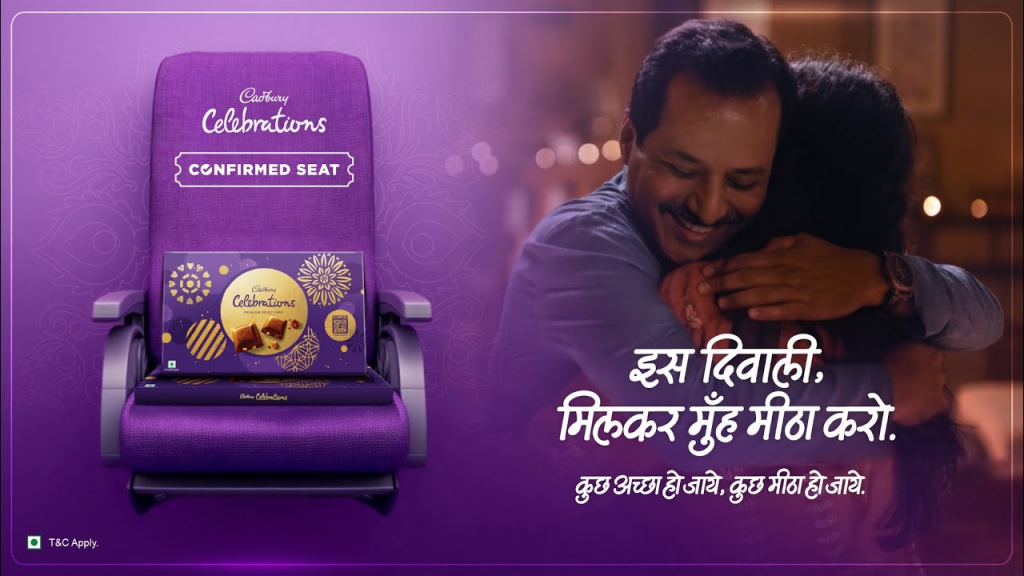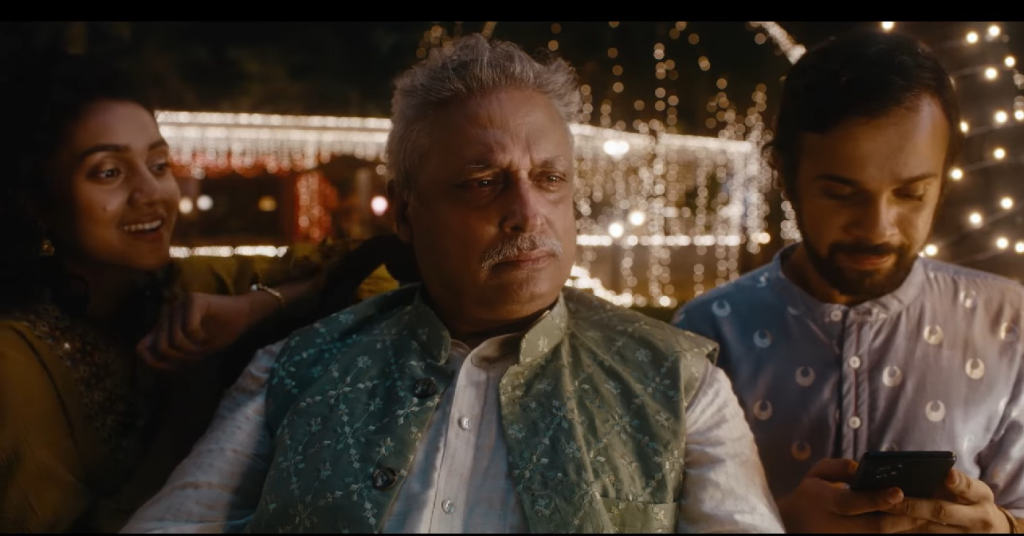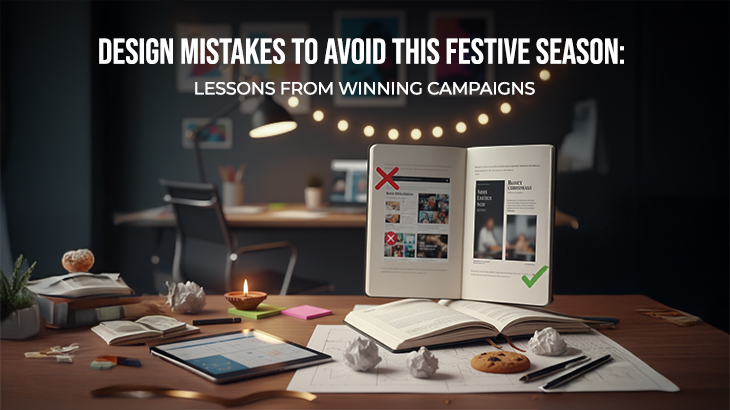Diwali isn’t just India’s biggest festival; it’s the Super Bowl of Indian advertising. With spending estimated to reach 1.85 trillion rupees ($22 billion) and 34% of urbanites planning to spend more this year, brands go all-in with campaigns that blend emotion, innovation, and cultural insight.
In this blog, we’re breaking down the winning festive campaigns of 2024, the design strategies that made them successful, and the common mistakes to avoid this season—a guide for design students to learn, get inspired, and create campaigns that truly connect.
Cadbury has mastered the fine balance between tradition and family values with modern sensibilities in its ad campaigns over the last decade. But 2024’s campaign took it further.
Cadbury’s “Not Just A Cadbury Ad”
Cadbury partnered with IRCTC to help families reunite by literally using chocolate boxes as a vehicle for togetherness. The campaign featured QR codes on Cadbury boxes, allowing customers to enter travel details for a chance to win confirmed train tickets.

The campaign addressed India’s notorious train ticket waitlist during peak travel, creating a compelling problem-solution visual narrative that resonated with audiences. Cadbury used interactive packaging design, transforming chocolate boxes into functional tools through QR codes, showing that products could be both delightful and practical. In contrast to typical festive ads overloaded with diyas and rangoli, they embraced simplicity over decoration, keeping visuals clean to emphasise the story rather than ornate embellishments.
For design students, the key takeaway is clear: emotion trumps decoration. Your festival design doesn’t need more gold gradients; it needs to solve a real problem or tap into a genuine feeling.
Zomato’s Space-Themed Campaign
As the Indian Space Research Organisation prepares for its inaugural manned launch in 2026, Zomato created a space-travel-themed ad spoofing communications from space.

Zomato’s standout approach was cultural moment hijacking, connecting the festival of lights with India’s space ambitions, literally reaching for the stars. Instead of traditional motifs, the campaign embraced an unexpected visual language, replacing diyas and rangoli with futuristic space aesthetics that felt fresh and modern. To amplify engagement, the content was crafted in a meme-worthy format, optimised for screenshots and share culture, making it highly viral on social media.
Tanishq’s “Nav-Raani” Campaign
Tanishq’s “Nav-Raani” campaign, titled “Embrace the Nav-Raani in You,” celebrated the new-age woman—someone who values fine craftsmanship, pays attention to detail, makes independent choices, and curates her life on her own terms.

The campaign’s design hinged on the balance formula: Traditional Element + Modern Execution = Cultural Relevance. For instance, intricate mandala patterns were reimagined through 3D animation, while classical dance poses were captured in minimalist studio settings. This approach honoured cultural heritage while presenting it in a contemporary, relatable way.
Common design mistakes and how to avoid them this festive season:
- “More is More” Approach
Many campaigns try to cram every possible Diwali element—diyas, lamps, fireworks, rangoli, even peacocks—into a single visual. The result is cluttered and overwhelming, which distracts from the message. Instead, focus on one iconic element and execute it beautifully, allowing it to take centre stage and resonate more deeply with the audience.
- Ignoring Regional Differences
India’s Diwali traditions vary widely across states, and campaigns that only showcase North Indian customs risk alienating large audiences. Successful brands either create regional variants or design inclusive umbrella campaigns that celebrate the festival in ways that feel culturally relevant across regions.
- English-Only Text
Assuming that everyone prefers English can limit reach and authenticity. Instead, leading campaigns embrace multiple languages and incorporate nano influencers who depict real-life scenarios, making the messaging feel personal, relatable, and more engaging for diverse audiences.
- Everything static
PDF-style posters or still images in a world dominated by video and motion fail to capture attention. Effective campaigns incorporate simple animations like floating diyas, twinkling lights, or subtle movements that bring visuals to life, making the content dynamic and shareable without overwhelming the viewer.
Just like the winning festive campaigns we explored in this blog, ARCH educates aspiring designers to create work that connects, engages, and makes an impact. With programs in fashion, interior, jewellery, product, and digital design, plus hands-on projects, industry exposure, and state-of-the-art facilities, ARCH equips students to craft campaigns that are not only visually stunning but culturally relevant and emotionally engaging. If you’re passionate about turning creative ideas into meaningful design, this is where your journey begins.
